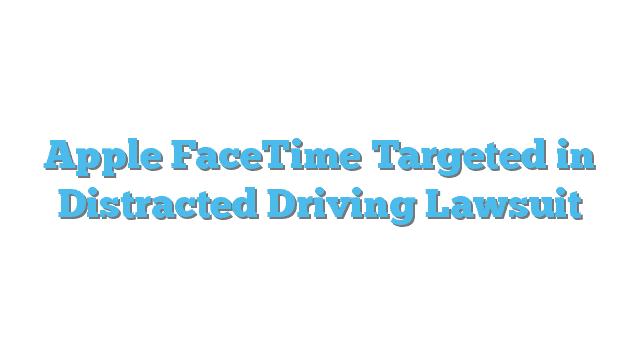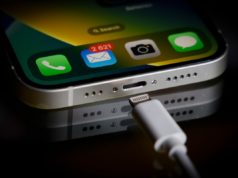The lawsuit, filed in Santa Clara superior county court, relates to an incident that took place on Christmas Eve 2014, when a driver allegedly using the FaceTime video chat application on his iPhone 6 Plus drove into the car of Bethany and James Modisette. The couple, along with their daughters Isabella and Moriah, were injured in the accident, and Moriah later died in hospital from her injuries.
In their complaint, highlighted by Courthouse News, the Modisettes claim that Apple should be held accountable for the accident since the smartphone manufacturer had a patent for a safer version of FaceTime designed to prevent people from using the video and voice call application while driving.
Despite filing the patent, Apple chose not to introduce the technology to its iPhones. The patent in question, granted in April 2014, describes a lock-out mechanism that disables the mobile device from performing certain functions, such as texting, while driving.
The Modisettes allege that Apple’s failure to introduce the patented feature, or warn users that using FaceTime while driving could be dangerous, was a “substantial factor” in causing their injuries and Moriah’s death.
The case is not the first of its kind. Earlier this year, while checking her iPhone for messages, Ashley Kubiak crashed her truck into another vehicle in Texas, killing its driver and leaving a child paralyzed. The families of the victims also filed a case against Apple, contending the company knew its phones would be used for texting and did not prevent Kubiak from texting dangerously.
Kubiak was convicted of negligent homicide and sentenced to five years on probation.
“Plaintiffs are saying to manufacturers: if your product unnecessarily diverts the driver’s attention away from the road in the moment before a collision, you may be on the hook,” said Nora Freeman Engstrom, a Stanford law professor.
“If the plaintiffs were to prevail, the case could have sweeping implications, not just for handheld devices, but for navigation systems, car radios — potentially even fast food purchased at drive-through windows.”
However, it will be difficult for the plaintiffs to show that it was the iPhone that caused the accident when there is another actor — the distracted driver — who could be labelled as a “superseding cause”.
“A superseding cause breaks the causal chain, and here would relieve the iPhone manufacturer of liability,” Engstrom said.
A complicating factor in both of these cases is that the accidents took place in Texas, where it’s mostly legal for drivers to make phone calls while driving and there’s no state-wide ban on texting while driving, although many cities have outlawed the practice.
“Ordinarily if a manufacturer is being sued for an illegal use of their product, they shouldn’t be liable,” said Eric Goldman, a professor at Santa Clara University school of law.
However, if the company knew that its devices could be used illegally and had a way to prevent it, there may be grounds for liability — although such liability would hinge on whether the technical solution (in this case, the patented lock-out feature) was feasible.
“There’s currently no way to determine whether or not the person using the phone is driving. They could be the passenger,” said patent lawyer Mark Terry. “I don’t think they have a sound legal premise.
“A tragedy has happened and they are looking for a deep pocket. Apple has a deep pocket so if anyone can find a reason to hit them at all, they will,” he added.
Goldman agrees. “This is what personal injury lawyers do,” he said.
“They sue not only the person who caused the harm — the driver — and then everyone else they can think of who might have contributed to the accident.”
That’s not to say that cases like these won’t cause problems for device manufacturers in the future.
“The patent proves that Apple knows, and has long known, that phone use and driving is widespread and is dangerous,” said Engstrom. “Apple’s inaction in the face of that knowledge may not trigger liability here. But it may well expose Apple to liability down the road.”
Apple did not respond to a request for comment.
© 2017 Guardian Web
syndicated under contract with NewsEdge. -.







